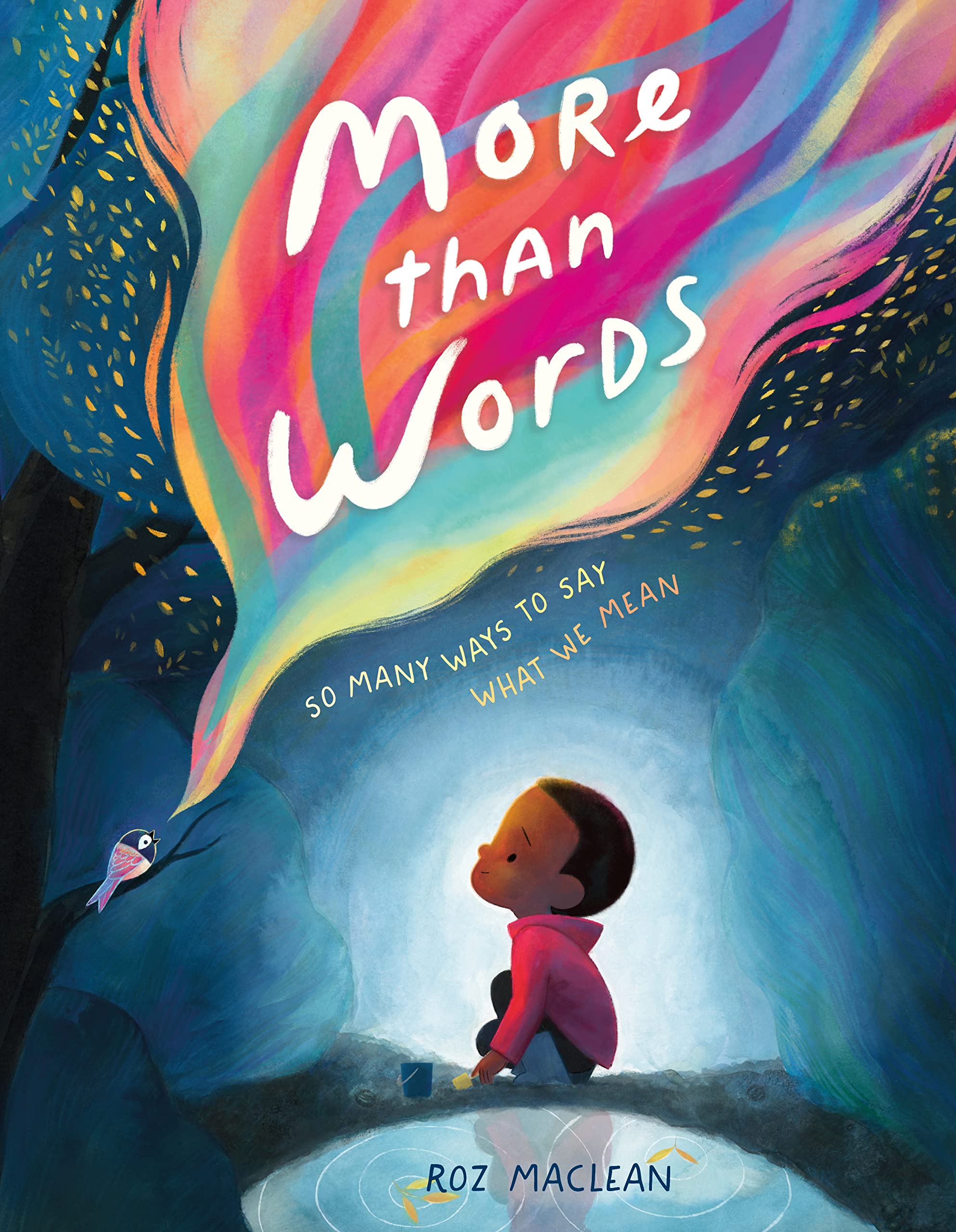More than Words: So Many Ways to Say What We Mean

More than Words: So Many Ways to Say What We Mean
If Nathan is quiet, how could you
know if he wants to be friends?
Do you think you could figure out a way…
…. to listen?”
More Than Words: So Many Ways to Say What We Mean is a gorgeous picture book, one all about communication. Vibrant movement-filled illustrations accompany text that beautifully captures the many ways kids might say, or not say, what they mean.
The story opens with Nathan, a young boy who, like many other children, doesn’t say much. He listens. His quiet is immediately contrasted to several other classmates' vocalizations, but MacLean is quick to point out that, just because Nathan doesn’t speak much, that doesn’t mean he’s not thinking much. More Than Words gently pushes back at the ableist assumptions we sometimes make about others simply because of the way they are able to, or choose to, communicate.
This picture book is a masterclass in inclusion. There are children who communicate in a variety of ways, from speaking, to braille, to using a tablet. MacLean also points out, though, that children use movement, facial expressions, and art to communicate thoughts and feelings. One of the most beautiful aspects of the book is that, while it is focused on the myriad ways people communicate, it is not all about disability and difference. Certainly, there are children who might have speech delays, or be on the spectrum, or have any number of other developmental delays or disabilities, but placing them alongside ‘typical’ kids and interspersing typical methods of communication with more accessible or less common forms of communication serves to integrate and normalize the differences represented. It shows that, while someone who might make lots of repetitive noises to communicate might seem unusual, it is not any more “different” or unusual than someone communicating with paint. This highlights an oft-seen double standard where differences in those with disability are highlighted or stigmatized whereas differences exhibited by ‘typical’ kids are often tolerated or overlooked.
The illustrations in More Than Words are beautiful and full of a rainbow of vibrant colours. Soft lines and cute, expressive faces help to show how characters are feeling at any given moment. The illustrations are a mixture of gouache, pencil crayon, ink, and digital processing which gives a soft but clean watercolour-like effect. Text is incorporated into the illustrations in a variety of ways, sometimes as emphasis, sometimes as part of the images themselves. One excellent example of this is the word “wear” being stylized like a number of garments hung up on a clothesline.
One of the most beautiful aspects of More Than Words is that it’s clear that its motives are not simply to explain and number differences, but to truly celebrate them. Many children will read this book, or have it read to them, and see themselves, a friend, or a classmate represented on the page for the first time. That alone is powerful, and reason enough to read this book, but the fact that it is told so beautifully, both in art and prose, makes it a true standout.
More Than Words is an excellent first purchase for both school and public libraries. This book would be great as an independent read, as a read-aloud for a class or group, or read to a child by a caregiver. Children will enjoy the lush, colourful illustrations and will have plenty of material to prompt questions and observations.
Alex Matheson is a children’s librarian living in Vancouver, British Columbia.
